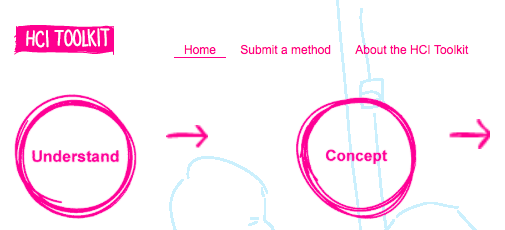The overarching goal is to enlighten human- computer interaction (HCI) researchers, UX-designers, software engineers and other stakeholders that are involved in the conception, design or development of ICT products and services to enable them to develop a shared understanding of a HCI methodology. Having a human-centered ICT toolkit enables a theoretical and practical understanding of user centered design and evaluation methods for interactive software and media. It has the following functions:
- A guide to easily get an overview and understanding of user centered design and evaluation methods for interactive software and media;
- An overview of methods, tools and techniques
- available in literature and online resources;
- An overview of methods, tools and techniques learned and applied in CMI courses;
- An overview of techniques and tools being employed in different IT- and media enhanced sectors (i.e., student’s realistic projects).
Although most design processes cannot be regarded as strictly linear processes, for clarity reasons the process has been depicted, as it was a linear process. Note that iterations take place in every stage of the process as artifacts are: created, tested and analyzed in an iterative manner. Each tool listed in the toolkit’s overview, has been described in a reference card (see Figure 2), which entails the following: a brief description, when to use it, why to use it, points of interest and references to literature and online resources for more information.



